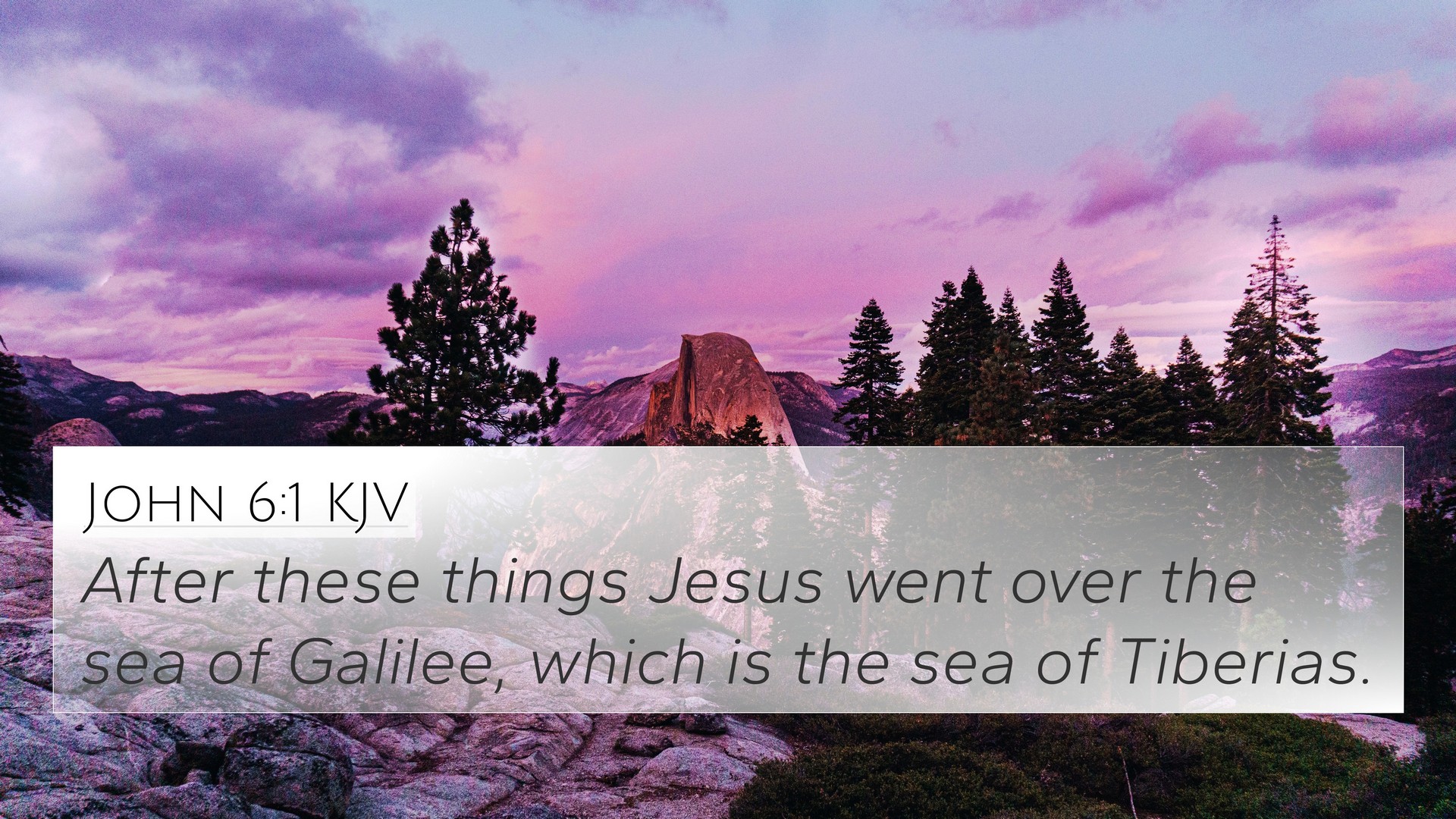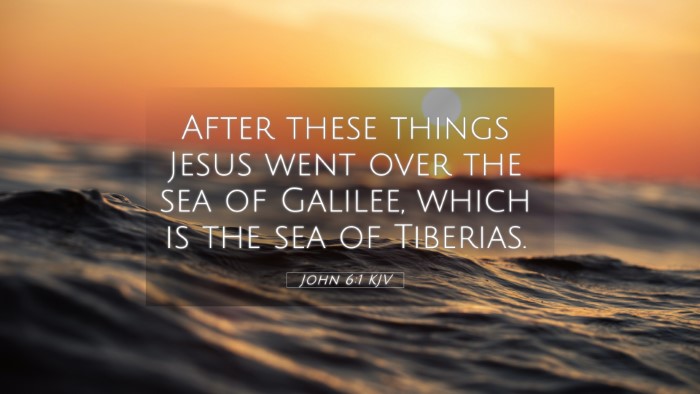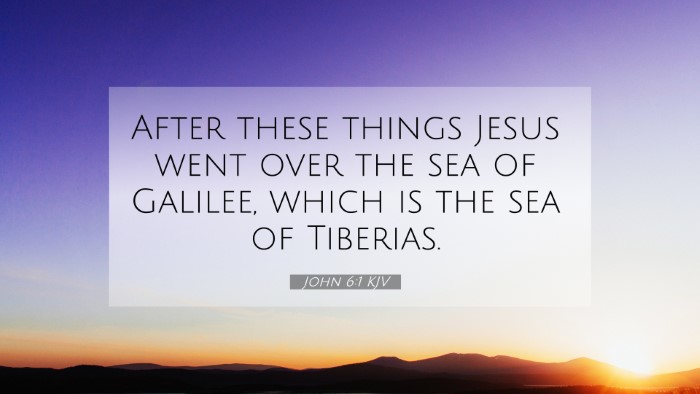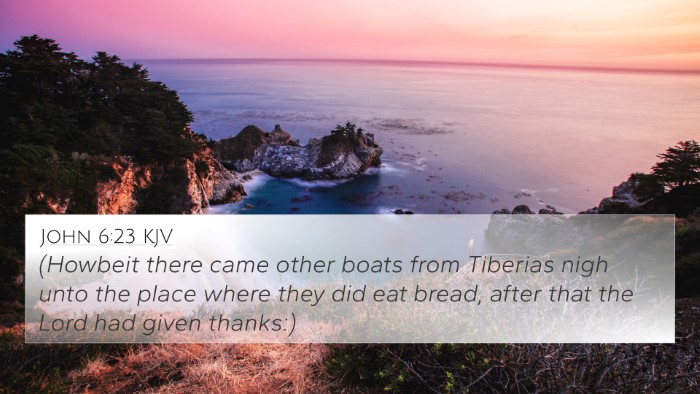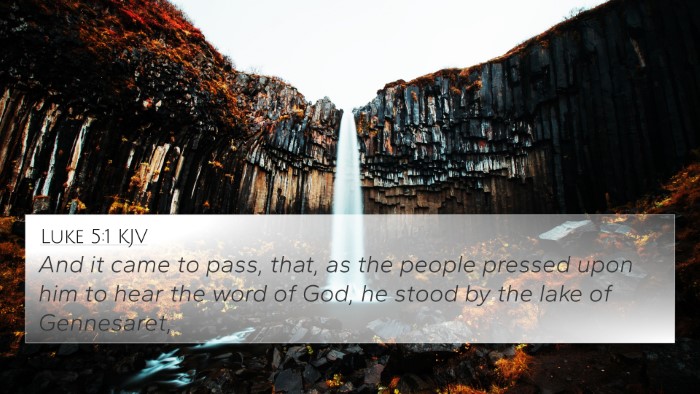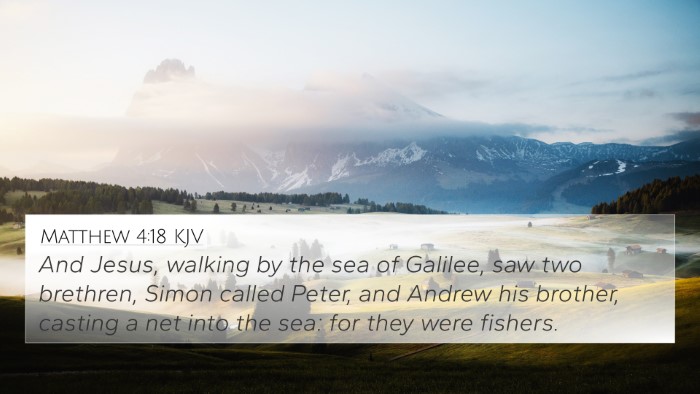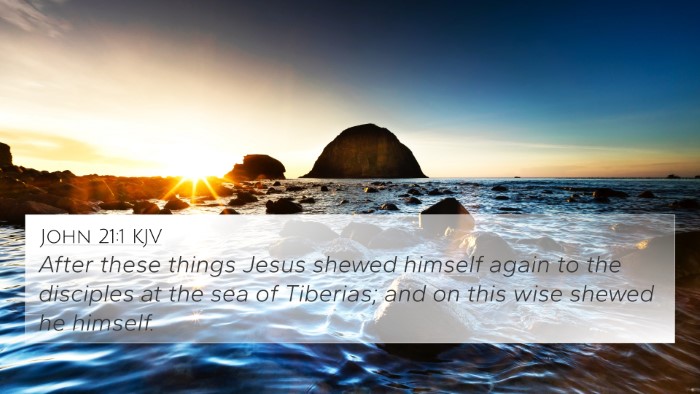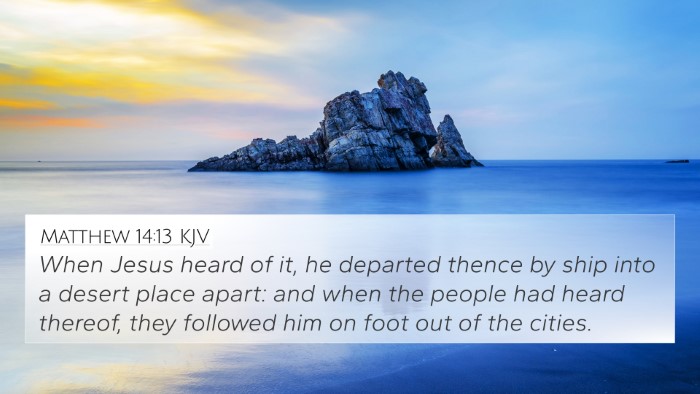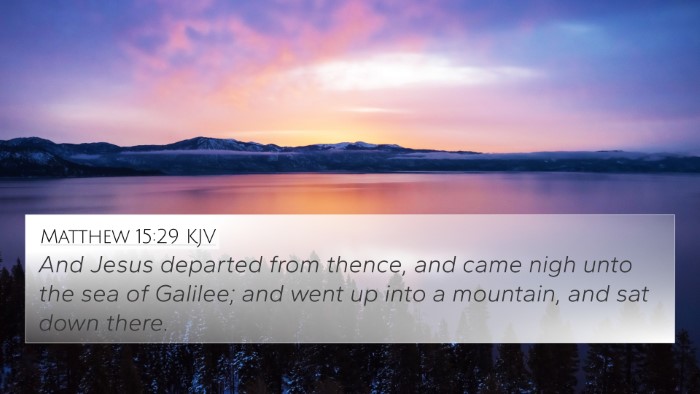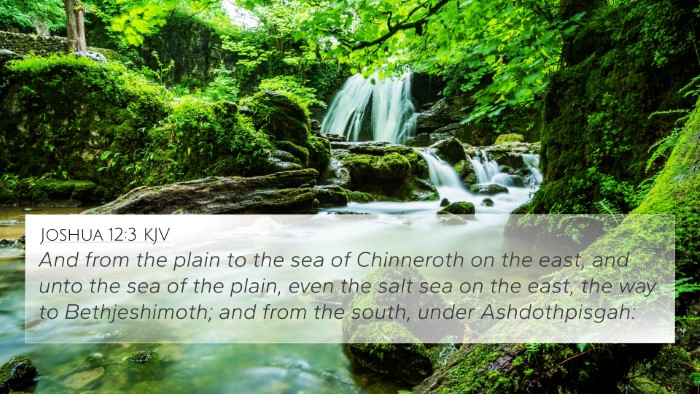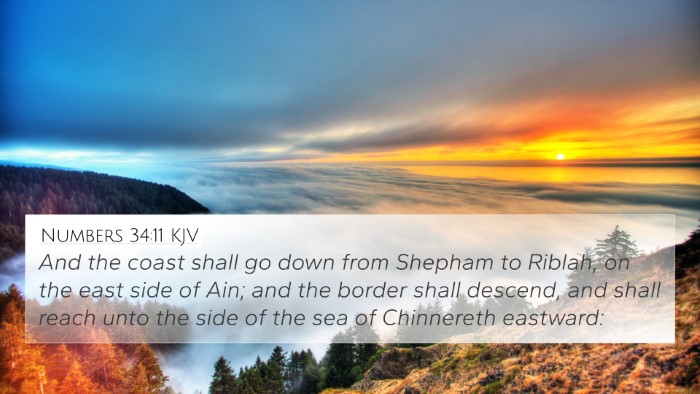Interpretation of John 6:1
John 6:1 states, "After these things Jesus went over the Sea of Galilee, which is the Sea of Tiberias." At first glance, this verse sets the geographical context for events to come in the chapter. However, a deeper exploration reveals significant theological and narrative implications.
Summary of Insights from Commentaries
The commentaries by Matthew Henry, Albert Barnes, and Adam Clarke collectively offer invaluable perspectives on this verse. Below is a synthesis of their insights:
- Geographical Context:
Henry points out that this verse indicates the movement of Jesus as purposeful, suggesting His ministry's expansion. By crossing the Sea of Galilee, He reaches a diverse audience and demonstrates His willingness to be accessible to those seeking Him.
- Symbolism of the Sea:
Both Barnes and Clarke highlight that in biblical literature, water often represents chaos, depth, and the unknown. Jesus's crossing of the Sea illustrates His authority over these elements, foreshadowing His ability to calm storms and even walk on water (John 6:19).
- Historical and Cultural References:
Henry notes that the Sea of Tiberias was a significant location not only geographically but culturally as well. The mention of it invokes the memories of numerous teachings and miracles of Jesus associated with this locale, reinforcing its importance in the narrative of the Gospels.
- Purposeful Ministry:
Clarke emphasizes that Jesus’s journey across the sea symbolizes His relentless pursuit of people. The act is emblematic of His broader mission: to offer salvation and reconciliation. It foreshadows the miraculous feeding of the five thousand, which follows in the subsequent verses, highlighting the connection between His movements and His ministry's miraculous nature.
- The Gathering of Disciples:
As Barnes suggests, Jesus's movement across the sea also invites His disciples to join Him. This indicates their growing involvement in His ministry and foreshadows the significant roles they will play in the early Church.
- Public Curiosity:
Henry also points out that such movements attract public attention. The restless crowds are a theme observed throughout the Gospels – they demonstrate the ever-present curiosity regarding Jesus's teachings and miracles.
- Cross-Referencing with Other Scriptures:
The verse serves as a critical link to other biblical events. It is through cross-referencing with passages such as Matthew 14:14-21 (the feeding of the 5,000), Mark 6:30-44, and Luke 9:10-17 that one can appreciate the fullness of this miracle.
Bible Verse Cross-References
In order to delve deeper into the connections between Bible verses related to John 6:1, here are several scriptures that enhance understanding:
- Matthew 14:14-21: Jesus feeds the five thousand, connecting His ability to provide physically and spiritually.
- Mark 6:37: Disciples ask how they can feed the crowd, showcasing their doubts and Jesus’s power.
- Luke 9:11-17: Another account of the feeding of the five thousand, highlighting variations in perspective.
- John 6:16-21: Jesus walks on water, illustrating His dominion over nature.
- John 1:29: Jesus as the Lamb of God, setting the stage for His sacrificial role.
- Isaiah 35:6: Prophecy about miracles in the Messianic age enhances the significance of Jesus’s works.
- Psalms 107:23-30: God's sovereignty over the seas complements the narrative of Jesus crossing the Sea of Tiberias.
- John 10:11: Jesus as the Good Shepherd, reinforcing His nurturing role over the people.
Thematic Connections
Exploring thematic connections through these verses shows how they interlink in portraying Jesus's identity and mission. The geographic journey of Jesus over the Sea of Galilee becomes a metaphor for His ministry's transcendence across boundaries—be they physical, social, or spiritual.
Conclusion
John 6:1 serves as a rich starting point for deeper Scriptural cross-referencing. Understanding its implications through expert commentaries invites readers to a broader appreciation of Jesus’s mission and the interconnectedness of biblical narratives. Implementing tools for Bible cross-referencing, such as a Bible concordance or cross-reference Bible study guide, can further enhance study into these relationships within scripture.
Further Study Suggestions
- Exploring cross-referencing methods: Learn how to find cross-references in the Bible to enhance your understanding.
- Investigating thematic Bible verse connections: Delve into topics such as miracles, provision, and leadership through cross-referenced themes.
- Cross-reference for sermon preparation: Utilize these teachings in practical application to better convey biblical truths in teachings and sermons.
